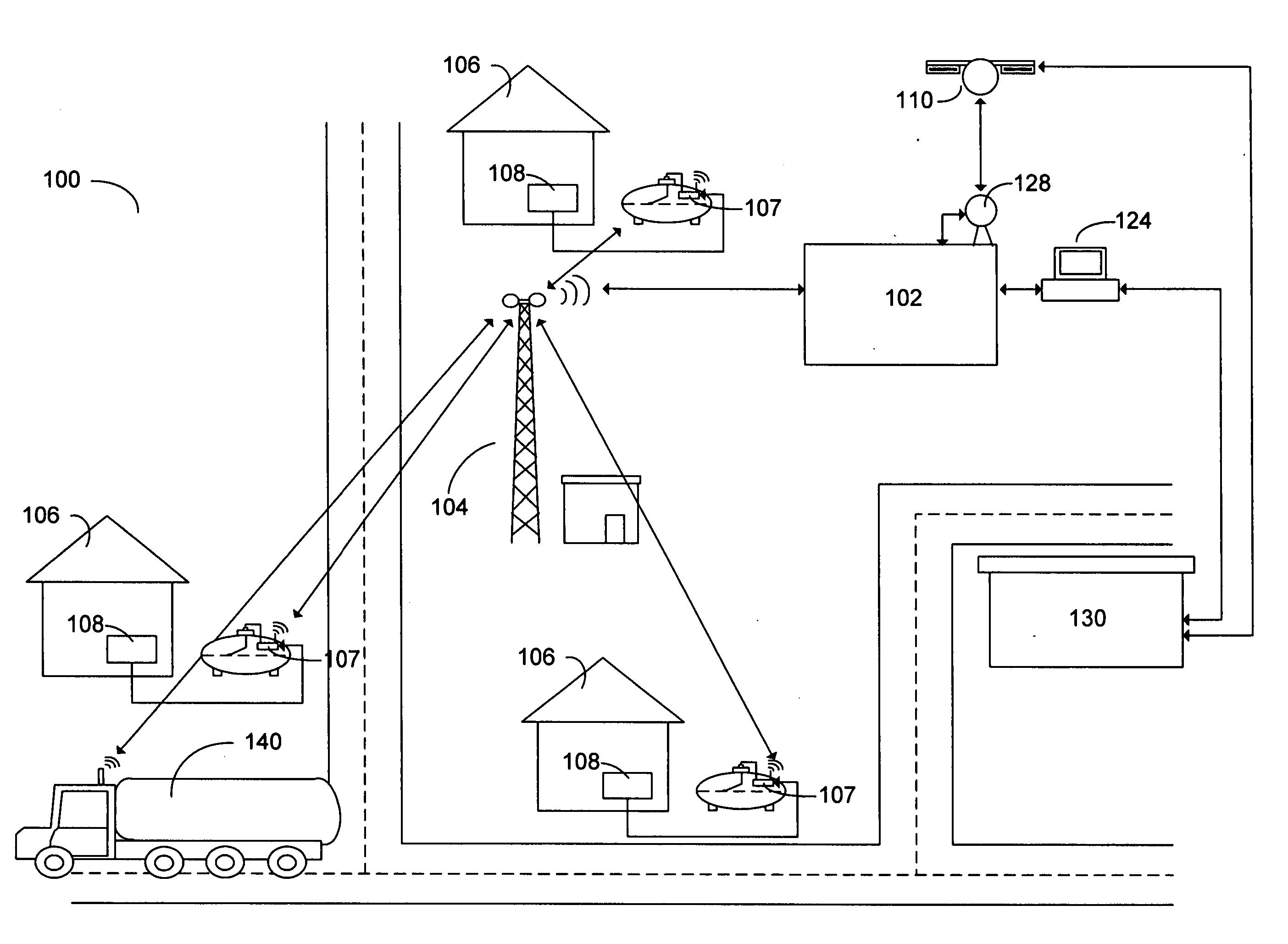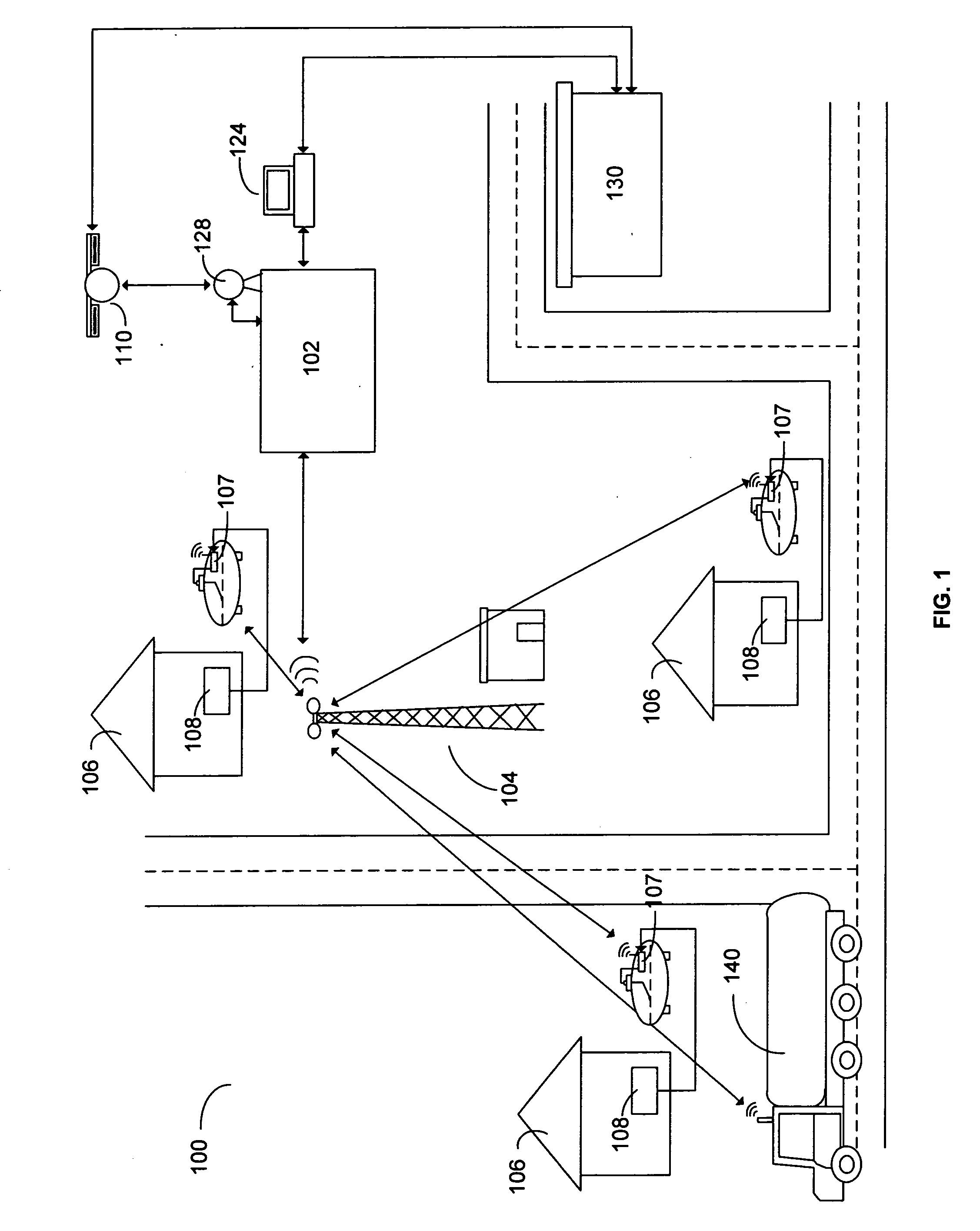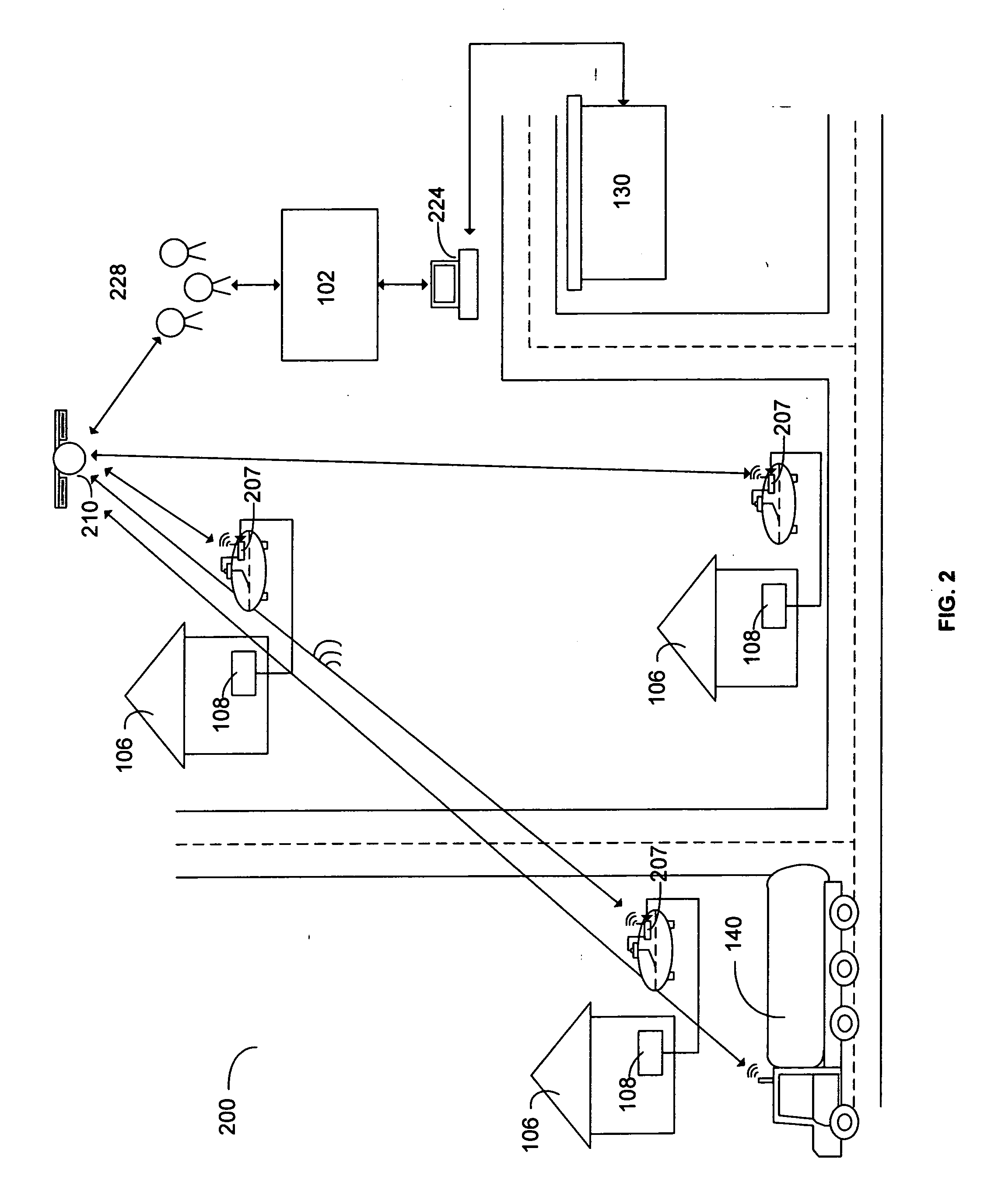System for delivering propane or other consumable liquid to remotely located storage tanks
a technology for propane or other consumable liquid and storage tanks, which is applied in the direction of navigation instruments, machines/engines, instruments, etc., can solve the problems of high labor intensity, high labor intensity, and difficulty in delivering, so as to improve labor intensity and efficiency, optimize the effect of scheduling deliveries and increasing revenu
- Summary
- Abstract
- Description
- Claims
- Application Information
AI Technical Summary
Benefits of technology
Problems solved by technology
Method used
Image
Examples
Embodiment Construction
[0033] A preferred embodiment of this invention provides a novel system and method for an improved system to coordinating the delivery of a liquid to remotely located storage tanks.
[0034] In accordance with another aspect of a preferred embodiment of the present invention, an agnostic communication scheme can be used for remote monitoring of liquid gas levels in storage tanks. Thus, communication does not have to be limited to a single communication platform. Any known suitable communication scheme can be employed to transmit data, such as cellular, land phone lines, wireless, satellite, cable, etc. Different communication schemes can be employed for different customers or tank locations, depending on which scheme is optimal for the individual client or location. Selection of an optimal communication network can be based upon factors such as location, availability of cellular signal, availability of telephone lines, and desired equipment investment by customer.
[0035]FIG. 1 shows o...
PUM
 Login to View More
Login to View More Abstract
Description
Claims
Application Information
 Login to View More
Login to View More - R&D
- Intellectual Property
- Life Sciences
- Materials
- Tech Scout
- Unparalleled Data Quality
- Higher Quality Content
- 60% Fewer Hallucinations
Browse by: Latest US Patents, China's latest patents, Technical Efficacy Thesaurus, Application Domain, Technology Topic, Popular Technical Reports.
© 2025 PatSnap. All rights reserved.Legal|Privacy policy|Modern Slavery Act Transparency Statement|Sitemap|About US| Contact US: help@patsnap.com



